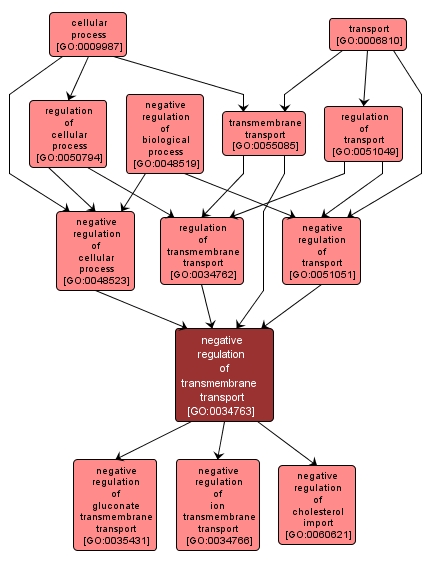GO TERM SUMMARY
|
| Name: |
negative regulation of transmembrane transport |
| Acc: |
GO:0034763 |
| Aspect: |
Biological Process |
| Desc: |
Any process that stops, prevents or reduces the frequency, rate or extent of the directed movement of a solute from one side of a membrane to the other. |
Synonyms:
- inhibition of transmembrane transport
- down-regulation of transmembrane transport
- downregulation of transmembrane transport
- down regulation of transmembrane transport
|
|

|
INTERACTIVE GO GRAPH
|














